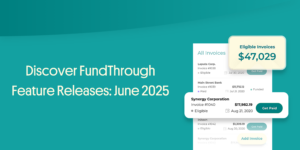
Discover What’s New: FundThrough’s June & July 2025 Feature Releases
We’re excited to share the latest innovations in the FundThrough platform—updates designed to make your funding experience faster, easier, and more transparent. With improvements to





